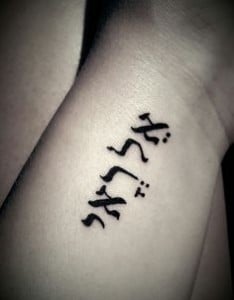It’s nice to hear that books on mainline Protestantism are resurgent, as reported in The New York Times. I had my own little resurgence on this topic when I published my dissertation, The Gold Coast Church and the Ghetto: Christ and Culture in Mainline Protestantism (1999), and in a more recent empirical comparison, Evangelicals vs. Liberals: The Clash of Christian Cultures in the Pacific Northwest (2008).
My take was that while that there are oases of vitality in what I like to call liberal Protestantism, such as Fourth Presbyterian Church in Chicago, the broader picture is dire. Indeed, in coming to the Pacific Northwest, which I thought a natural context for liberal Protestants, what I found was a very weak rendition of the tradition. In trying to collect a sample of vital liberal Protestant churches, all I could come up with was churches that were maintaining their membership while otherwise growing old and gray. The evangelical churches, on the other hand, were bursting forth in growth, doubling every five years, and now, in Washington, the “none zone” par excellence, there are 51 megachurches, all evangelical. And, in the recent Religious Congregations and Membership survey on Washington State, evangelicals outnumber the “mainline” by more than 2 to 1. And this ratio is very close to the national averages.
Some might wonder, why do I call these mainliner’s “liberal Protestants”? And, of course, there is a spectrum of views in all these congregations. Many are Eisenhower Republicans, economically conservative and socially moderate; some are liberal democrats, who vary economically but are generally socially libertarian, and a few mainliners follow forms of liberation theology (mostly clergy types), but these are in the minority by far. Sociologists, like Nancy Ammerman, have named them “Golden Rule Christians”– inclusive types, who want to help others, enjoy good music and well-informed sermons. More recently, Dean Hoge et al. called mainliner’s lay liberal Christians. I’ll let these authors speak for themselves:
“We have named this pattern the theology of lay liberalism. It is “liberal” because its defining characteristic is the rejection of the view that Christianity is the only religion with a valid claim to truth. It is “lay” because it does not reflect any of the theological systems contained in the writings or seminary lectures of today’s post-orthodox Christian intellectuals. Our interviewees did not speak the language of liberation theology, feminist theology, or the theology of Presbyterian General Assembly pronouncements. Lay liberalism does borrow from the views of certain dead intellectuals, but it is largely a homemade product, a kind of modern-age folk religion. Unlike contemporary evangelicalism or other versions of Christian orthodoxy, lay liberalism is not a highly elaborated or richly developed system of thought.”
This is very much what I found and what I experience as I research and minister among my fellow “mainline” Christians. So what can be said about this group? Roger Olson’s recent blog on mainline religion seems apt and accurate in summing what the NYT’s article was saying about mainline religion:
“An underlying theme of the article and the scholarly speeches and articles it reports about is that American mainline religion, liberal, ecumenical Protestantism, still has vitality and deserves recognition for its historical and contemporary cultural and political influence.”
And, of course, this idea that the so-called mainline should be studied is obvious, and yet, the conclusions drawn, at least from the NYT’s article, makes me wonder. Is the state lay liberalism a function of the mainline or the broader trajectory of U.S. culture? Mark Chaves’ recent book American Religion: Contemporary Trends goes to the heart of the issue: in 1924 91 percent of Americans said that Christianity was the only “true” religion; today, it’s 41 percent.
As Hoge et al. suggest in their research, what has fallen out of the center of lay liberal religion is any real belief that Christianity is a true religion, much less the true religion. And these folks didn’t get this from their religion, because they generally don’t go to church. My sense is that the mainline came to reflect lay liberalism because that’s what they experience in the culture and in their pews.
Now, it seems that many liberal intellectuals commenting on mainline decline would say this is a function of the mainline movement; and many of them would say this is good thing, creating a desire for inclusion and tolerance. People will no longer fight, much less kill for their faith.
And this really gets at the heart of the question: Can a religion, mainline or liberal, survive, much less thrive, with a clientele that doesn’t really believe that their religion is true, much less the only true religion?
One thing I think we can say is that it won’t thrive: the numbers say the tradition is declining. We can also say this kind of religion won’t reproduce itself, since its children and youth are not staying in these churches. So the outlook, at least sociologically, is not very hopeful. So, this experiment, which may be the first in Christian history, weighs in the balance: Can a Christian faith sustain itself with adherents who don’t really believe in what is at the heart of the tradition, that Jesus is Lord?











